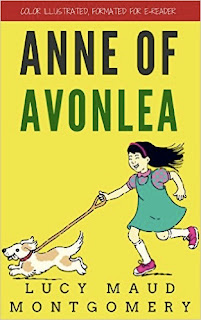Dirty City
Michael Young
Toronto: News Stand Library, 1949
If you cannot find the name of Dirty City on the map of the United States it's because you haven't looked hard enough. Look again and you're sure to find it. It's there all right, only the inhabitants don't call it by its right name.Miami? Fort Lauderdale? All I can say for sure is that it's most definitely in Florida. Maybe you know it. Dirty City is a place of lush hotels by the beach, expensive dress shops, fur stores and call houses. Hayseed suckers will save, stay long enough to get a tan, and then return home to brag. In Dirty City an assemblyman once proposed making it illegal for the poor to be seen in rich neighbourhoods. His fellows though it might bring bad publicity.
As News Stand Library novels go, Dirty City isn't all that bad. While it stumbles stylistically, the dialogue is strong and the plot is interesting. In the right hands it might have made for a solid B-movie, though casting would have been a challenge.
There are thirteen characters in Dirty City; these are just three:
- Pepe Gonazales, a champion jai-alai player who lost his title after breaking his arm. He's in love with Rosalinda, owner of a successful hash joint.
- Simco Sorensen, a loveable giant who owes a little something to Steinbeck's Lennie Small. He's in love with his greyhound bitch Gypsy.
- Mickey Warren, a handsome, lazy war vet. He's in love with himself.
Consider it an investment. Pepe is looking to make a comeback. Simco is somehow convinced that Gypsy would be a champion racer if only he could afford a trainer. Mickey sees the dough as providing seed money for future schemes.
This particular scheme is brought down by the arrival of New York chorus girl Milly White. Her appearance in Dirty City is the doing of boyfriend Jimmie Henderson, a Broadway producer who has fallen on hard times. Jimmie has his own scheme, which involves trading his unsuspecting girl for Johnson's investment in a new show. If this seems a long shot, it's only because you haven't seen Milly:
Milly looked like you'd imagine a girl might look like if Rita Hayworth and Betty Grable were one. Add a touch of what Ava Gardner has, and you're jet about describing Milly White.Jimmie's gamble pays off. Johnson gives him $50,000 to abandon Milly and return to New York, where a further $200,000 awaits. Mickey is thwarted by the producer's success. Johnson has no use for the cabin, choosing to forgo his usual season of orgies and focus on one woman:
His feeling for her was a mixture of admiration and intense hatred. He wanted to desecrate her, use her, whip her, destroy her morally, and then, when she looked old and finished throw her out.Finding himself saddled with a useless piece of real estate, a desperate Mickey sets out to replicate Jimmie's success by presenting himself as a good samaritan, gaining Milly's trust, have her fall in love with him, and then sell her off to Johnson. Seems another long shot, I know, but he very nearly pulls it off.
If Mickey's near-success seems improbable, it's only because of a sudden change of pace. I sense an editor at work, slashing to bring the book in at the publisher's usual 158 page count. Events in the final quarter come fast and furious. The barrage doesn't let up until the end, which features an unusually long monologue in which Mickey attempts to explain himself. Nothing will be spoiled by including a snippet or two here:
I hated the idea of people making millions during the war on the blood and horror of the guys who fought and died. I figured I wouldn't be a sucker, that I'd make my pile.
…
Now they're drumming up another little war for us. But they don't get me this time. I was right about some things and wrong about others. Just because they were bastards profiting by the war didn't mean I had to become one.
A novel about the corrupting influence of money and those who have it, in an odd way Dirty City isn't at all dated.
Depressing, I know.
Take heart, it's also a novel about the redemptive power of love and how it triumphs over money. Author Michael Young's message – for this is a message novel – is that money can't buy love.
But then we've known that since 1964.
About the author: I know nothing. This novel is the last in an effort to read titles and authors by published only by News Stand Library. My thinking was that maybe, just maybe, I might come across something familiar that would lead to the discovery of another Love is a Long Shot or Waste No Tears. Wish I could report that the investment paid off.
Object and Access: One of News Stand Library's poorer productions, this one was a particularly challenging read. I'm certain there were more typos than usual. This is one of the more interesting:
This time she split. It hit him across the cheek and the saliva oozed down his chin. He wiped it off in disgust.Dirty City isn't so much as listed on WordCat, and yet isn't so rare that it can't be found for sale online. Prices begin at three Yankee dollars. Go get 'em!
Related post:











































